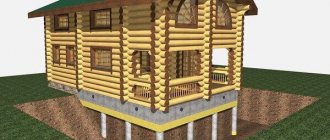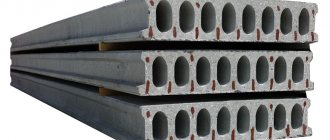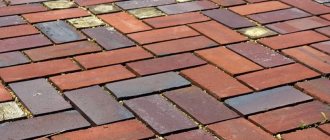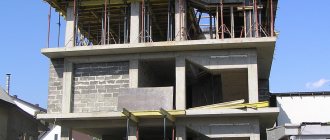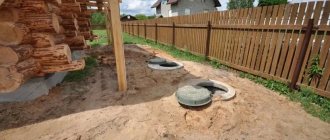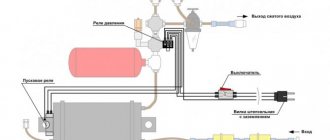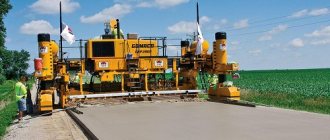Pile foundations are becoming more common in modern housing construction, due to its reliability and relatively low cost. Many people imagine piles in the form of steel pipes with threads that need to be screwed into the ground, although initially the pile foundation was created from “nails”: wooden, and then reinforced concrete, which were simply driven into the ground. If wooden piles are a priori short-lived and their application is specific, then we asked an expert on pile foundations, head of the sales department of the KZS plant, Marina Yuldasheva, to tell us more about reinforced concrete ones.
In the production of reinforced concrete piles Source sofia.flagma.bg
Square driven piles
This type of reinforced concrete piles is divided into three subgroups:
- Driven reinforced concrete piles with longitudinally stressed reinforced frame.
The length of such piles varies between 4-2 meters, standard sections are 25*25 and 30*30 cm. The design has the same cross-section along the entire length of the pile column.
Reinforced concrete piles with longitudinal reinforcement are designed for driving into loose soil of medium density (sandy soil, sandy loam, loam). It is allowed to immerse such piles in soil prone to horizontal shifts if the above-ground part of the pile pillars rises above the ground surface to a height of no more than two meters.
Fig. 1.1 : Driven reinforced concrete piles of square section
The scope of use of structures with longitudinal reinforcement is the arrangement of foundations of single-story and multi-story structures; their use is not permitted when creating foundations for hydraulic structures and bridges.
Expert advice! The possibilities of their use in regions with increased seismic activity and in heaving soil are also limited - the use of piles is permitted if calculations confirm that the force of the pressing effect on the pile pillar exceeds the force of the pushing effect of the heaving.
- Driven reinforced concrete piles with stressed longitudinal-transverse reinforcement;
Square reinforced concrete pile pillars with longitudinal and transverse reinforcement are produced with a cross-section from 20*20 to 40*40 centimeters (5 cm increments) and a length of 3-20 meters.
Transversely reinforced piles can be used in any type of compressible soil, in clay soil and soil with a large number of inclusions of rocks.
Rice. 1.2 : Scheme of transverse reinforcement of reinforced concrete piles
Expert advice! The lower part of the pile after driving must rest on a dense layer of soil (the placement of the pile base in a peat and silt layer of soil is not allowed).
Detailed information about driven reinforced concrete piles: Reinforced concrete piles
Structures with stressed transverse reinforcement can withstand both pushing and pulling vertical forces; they are highly resistant to bending pressure, making their use possible when constructing foundations for buildings of any type, including in hydraulic engineering.
- Driven reinforced concrete piles with longitudinal and transverse reinforcement with an unstressed reinforced frame;
Structures reinforced with a non-tensioned reinforcement cage can have a column length of 3-16 meters, a cross-section from 20*20 to 40*40 cm (5 cm increments).
The types of soil in which the use of piles of this type is permissible are similar to structures with stressed reinforcement, with the exception of rocky soils - due to differences in the reinforced frame, such piles are less resistant to impact when colliding with rocks.
Rice. 1.3 : Reinforced frame used for reinforcing driven piles
This type of piles is most in demand when arranging supports for transport construction - bridges, overpasses and when strengthening the road surface.
Due to their good resistance to pressing and pulling forces, reinforced concrete piles with a non-stressed reinforced frame are often used to strengthen slopes during the construction of tunnels and bridges.
You can find out how much it will cost to drive piles of a certain cross-section using our calculator: Calculator
Driven longitudinally reinforced piles with a circular cavity of square section
Driven-in reinforced concrete structures with a round cavity can have a cross-section of 25*25, 30*30 and 40*40 centimeters. The minimum length of pile pillars is 3 meters, the maximum is 8 meters.
They are intended for use in loose soil of low density (clay, loam, sandy loam). This type of piles is used for arranging foundations for low-rise buildings; in hydraulic engineering and automotive construction, pile pillars with a round cavity are not used due to their low resistance to bending loads.
Rice. 1.4 : Schematic illustrations of different types of piles
Expert advice! Compared to monolithic pile pillars, the creation of structures with a round cavity requires 20% less concrete mix and 15% less reinforcing bars. The reinforced frame of the pile can be made either with or without prestressing of the reinforcing bars.
Specifications
The distinctive properties of concrete piles depend directly on the grade of concrete used in the manufacture of reinforced concrete. A strong supporting foundation will be obtained from a high-grade concrete mixture. The marking is indicated by numbers and indicates the compressive strength of concrete and characterizes the class. When producing concrete piles, it is common to use grade B 6.5 and higher. An important indicator is the frost resistance F and moisture resistance W of the solution, determined by GOST. Weight is a parameter that depends on the type of concrete and the size of the support; the heavier it is, the higher the density of the reinforced concrete rod.
The dimensions of products and the components from which they are made determine their weight.
Driven hollow reinforced concrete piles of round section and shell piles
The differences between these types of reinforced concrete piles lie in their diameter: structures with a diameter in the range of 40-80 centimeters are classified as full round piles, with a diameter of 80-160 centimeters - as shell piles.
Such reinforced concrete piles can be made in the form of a solid column with a length of 4 to 12 meters. If it is necessary to increase the length of the structure, pile pillars are assembled from component parts, in which case their length can vary between 14-48 meters.
Hollow structures of circular cross-section are also classified according to the type of tip - they can have a closed prismatic tip (such piles are designed for driving with diesel hammers or vibratory hammers), or an open type tip.
Piles with an open bottom are placed in the ground using vibratory hammers. After installation of the pile, the soil from the internal cavity of the pile column can be removed (during further concreting); if there is no need for concreting, soil excavation is not performed.
Figure 1.5 : Reinforced concrete shell piles
Round hollow structures and shell piles are considered one of the most economical types of driven reinforced concrete piles. Compared to solid square products, their production requires 2 times less concrete and reinforcement.
Expert advice! Round piles are used for installation in weak soil of medium density. Their use is not allowed in peat, silt and clay soils prone to horizontal shifts.
The main area of application for hollow structures of circular cross-section is hydraulic engineering. Due to the maximum length of composite structures, they are indispensable when arranging foundations for piers, dams, jetties and hydroelectric power stations.
Advantages and disadvantages of the design
When erecting a building, preference should be given to reinforced concrete products according to the following parameters:
- Long period of operation. If technical standards are correctly observed in the production process of pile manufacturing, the product will last an average of 100 years without repair work.
- High degree of strength. Piles with internal reinforcement will support the load of a high-rise building of several floors.
- Sustainability. Resists atmospheric and small seismic influences when located in the ground.
- Installation and fixation on difficult terrain. Achieved by using bases of different lengths.
- Cleanliness and neatness. A foundation made of reinforced concrete piles allows for preparatory earthworks to be carried out with minimal contamination of the construction site.
- Speed of construction. Installed within a few days.
- Comparatively low cost. Pouring and installation will cost less than a monolithic concrete foundation.
- Not affected by weather conditions. The progress of work is not affected by rain, snow, or temperature changes.
Installation of such products without the use of special equipment is impossible.
When using reinforced concrete piles in construction, the following disadvantages should be taken into account:
- massiveness;
- weight;
- mandatory use when installing specialized equipment;
- difficulties with the construction of the basement;
- impossibility of use in rocky areas.
Piles-columns
Column-type piles are reinforced concrete structures with a length of 5 to 7 meters, after which, after immersion, the upper part of the column with a length of two to three meters remains above the ground, used as a support for the floors of buildings or other building structures.
Such piles have a square section of 20*20, 25*25 or 30*30 centimeters.
Expert advice! According to the requirements of the current SNiP, the use of conventional driven reinforced concrete piles as support piles is prohibited.
Rice. 1.6 : Example of using column piles
Column piles can be used in the following soil conditions:
- Clay soils;
- Loam;
- Sandy loam;
- Sandy soil of medium density.
This type of piles is not used in areas where the deep layers of soil on which the lower part of the pillar rests after immersion are represented by gravelly sands, silty and peaty soil and high-density sandy soil.
Column piles are widely used in the construction of one-story industrial buildings and agricultural structures; they are also used as foundations for above-ground technological facilities - tanks, pipelines, etc.
Composite reinforced concrete square piles
Composite piles have the same structural features as monolithic reinforced concrete piles - they can have both vertical and transverse (prestressed and non-prestressed) reinforcement. Composite piles are produced in two sections - 30*30 and 40*40 cm.
At the extreme ends of the composite piles there are special interlocking embedded cylinders, with the help of which the pile pillars are connected to each other by welding.
Rice. 1.7 : Composite reinforced concrete piles
The connection of individual parts of the pile is carried out after the first column is immersed - about 50 centimeters of the pile are left above the ground surface, after which the pile driver slings and positions the second composite column - the structure is placed perfectly exactly along the vertical axis of the immersed pile and the composite cylinders are welded.
It is rational to use composite reinforced concrete piles in the following cases:
- If it is impossible to transport long pile pillars to the construction site or if it is impossible to locate them on the site due to limited working space;
- In the absence of pile drivers capable of driving piles of the required length.
Expert advice! The final length of composite piles can vary from 13 to 29 meters, while during the construction of the foundation, according to the requirements of SNiP, more than six composite sections of one pile are not joined.
Cost of reinforced concrete piles from Stroy-line
Do you need high-quality reinforced concrete piles in Ufa? Contact . The assortment includes supports of any format at the manufacturer's price. The current cost of today's most popular pile, three meters long, with a square cross-section of 150 by 150 millimeters, is 3,600 rubles. The quality of all reinforced concrete products complies with European Union standards; all products in this group are covered by a guarantee.
Reinforced concrete piles are the best means for constructing a reliable, durable and strong foundation in any conditions.
Pile-pillars
Pillar piles are reinforced concrete structures with a solid cross-section and a cylindrical shape. Such piles are produced in one diameter - 80 centimeters, their length can vary between 6-12 meters.
The main area of use of pillar piles is the construction of foundations for road and railway bridges in regions with permafrost soil into which it is not possible to immerse other types of piles. Also, pillar piles are often used when constructing foundations on highly heaving soils.
Rice. 1.8 : Reinforced concrete piles-pillars
Pile-pillars are immersed in drilled leader wells with a diameter of 90 to 100 centimeters using a standard pile driver, after which cement-sand mortar is supplied into the free space between the walls of the well and the pile.
The gap area located below the soil freezing level is subject to concreting; dry sand is poured into the remaining free space.
